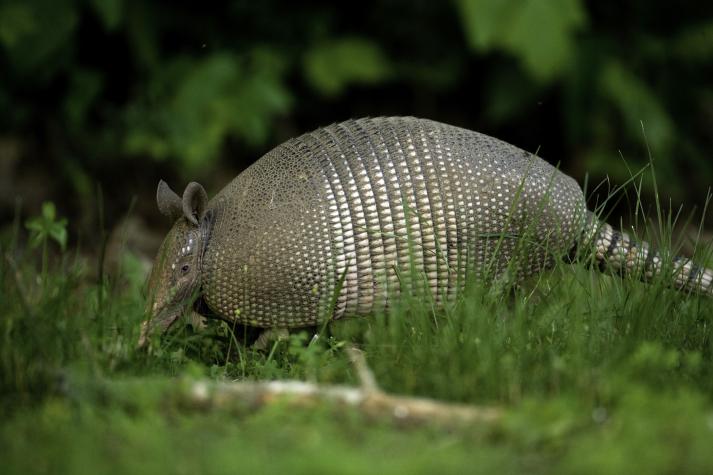COLUMBIA, Mo.- Missourians may find unexpected visitors in their lawns and gardens this summer as armadillos become a more familiar sight in the southern half of the state, said a University of Missouri Extension wildlife specialist.
"They are now commonly seen in southern Missouri," said Bob Pierce.
"We're getting more calls every year," said Jim Braithwait, wildlife damage biologist for the Missouri Department of Conservation.
Armadillos are more of a nuisance than a threat, said Pierce. They can tear up a lawn or garden as they root through the soil for insects and grubs.
Armadillos originated in South America, but one type of armadillo has ambled slowly northward in search of bugs to eat. Nine-banded armadillos reached Texas in the 1800s and showed up in the southernmost reaches of Missouri by the mid-1970s.
Here are some actions you can take if armadillos have invaded your lawn or garden:
Fencing: Armadillos can both climb and burrow. Pierce recommends an outward-slanting fence that extends well into the ground. According to Braithwait, an effective armadillo barrier should be at least 2 feet high and extend 8 to 12 inches into the ground.
Trapping: Pierce suggests a 10 x 10 x 32-inch live trap set along pathways to armadillo burrows as well as along fences and similar barriers. Placing 6-foot boards on either side of the trap's opening can help guide an armadillo into the trap. Baiting the trap isn't necessary, Pierce said, but spoiled fruit or meat might help lure a hungry armadillo.
Shooting: This is an effective and precise strategy, Pierce said, but because armadillos are active chiefly at night, patrolling your property for them might be impractical.
Killing armadillos should be a last resort, said John Miller, a naturalist supervisor at MDC's Shepherd Hills Conservation Center in Branson.
"Though relatively new to the state, they are considered part of Missouri's wildlife and should not be killed wantonly," he said.
If you trap or shoot an armadillo, Missouri's Wildlife Code requires you to report the action to a state conservation agent within 24 hours.
Though some armadillos carry the bacterium that causes leprosy, Miller said, the risk to humans is very small. Few cases of leprosy in the U.S. have been linked to contact with armadillos, and those instances involved prolonged exposure.
A more likely danger, Miller said, is standing or leaning over an unsuspecting armadillo. When startled, armadillos can jump several feet straight up. (This may be one reason armadillos often end up as road kill.) Weighing up to 20 pounds and equipped with armor plates, an armadillo can pack an unintentional wallop when alarmed.
While humans complain about armadillos vandalizing their land, some animals have benefited from their activities. "Armadillos often dig dens which are used by other species such as snakes, skunks and groundhogs," Pierce said.
Will the armadillo continue to migrate north? "There have been a few individual sightings north of the Missouri River," Pierce said.
However, northern Missouri's cold winters make it an uninviting destination for the armadillo, which doesn't hibernate and has minimal body fat. "The northern boundary is still the Missouri River," Miller said.
On the other hand, armadillos appear to be surprisingly resilient. Braithwait said he thought the ice storms during the winter of 2006-2007 would put a dent in the state's armadillo population.
"I was hoping that would set them back a bit, but it didn't," he said. "I don't know what it's going to take."
The MU Extension guide "Armadillos in Missouri: Techniques to Prevent and Control Damage" (G9456) is available online.
